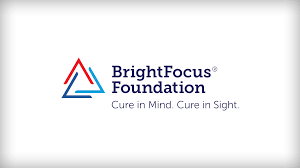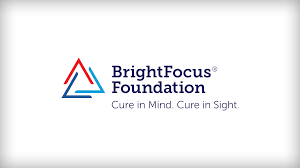
Collaborative Research Network 2025 Scientific Track Opportunity (Parkinson’s disease | worldwide)
The Aligning Science Across Parkinson’s (ASAP) Initiative invites applications from collaborative teams to join the ASAP Collaborative Research Network (CRN), an international, multidisciplinary, multi-institutional network of research teams working to address high-priority research questions in an effort to advance our understanding of Parkinson’s disease (PD) and drive new ideas into the R&D pipeline. For this cycle, applications within the Scientific Track that focus on dissecting the mechanisms that contribute to PD heterogeneity will be considered.
Areas of Focus
All applications must fall into one of the following six focus areas:
1. Examining PD in the Context of Aging
Advanced age is the best-established risk factor for PD; however, it is still unclear how aging-influenced processes contribute to the underlying pathogenesis of PD. This call will support discovery efforts to understand pathogenesis and progression of PD in the context of biological aging, exploring whether targets for aging-influenced processes are involved in changing the timing of onset, features, and rate of progression of PD. For this call, a variety of well-validated models can be utilized from in vitro, in vivo, in silico and human cohorts.
In scope:
The types of applications we seek to fund would focus on the following areas of study:
- Investigating whether factors proposed to rejuvenate the aging brain can influence PD disease onset and rate of progression
- Exploring compensatory biological mechanisms associated with aging and their impact on PD disease progression
Out of scope:
- Prospective studies requiring new or active cohort recruitment (however existing aging cohorts and available data can and should be leveraged)
- Studies with a primary focus other than PD biology, including general studies of aging, or studies focused on non-PD neurodegenerative disease
- Studying interactions between PD risk genes, biological sex, and age in PD onset and progression to understand what specific characteristics may mediate progression, clinical presentation, pathology, or reduced penetrance in PD
- Projects positioned to transform our understanding of the mechanisms involved in Early Onset PD (EOPD), individuals who are diagnosed with Parkinson’s before age of 50.
2. Understanding How Co-Pathologies Can Influence PD Pathogenesis and Progression
Human postmortem data has demonstrated that co-pathology exists between PD, Lewy Body Dementia, and Alzheimer’s disease. This theme aims to better understand the mechanisms that impact the drivers and downstream effects of co-pathologies in the context of PD development and progression. Although the primary focus is on neurodegenerative co-pathologies, exploration into other known co-occurring conditions, such as Inflammatory Bowel Disease, can also be considered.
In scope:
The types of applications we seek to fund would focus on the following areas of study:
- Human pathology studies or other models that can help us understand the temporal and spatial sequence of co-pathology in the brain within different neurological diseases under physiologically relevant conditions (e.g., how do physiologically relevant levels of tau, amyloid beta, TDP43, and alpha-synuclein interact and influence disease processes)
- Meaningfully address whether co-pathologies contribute to converging mechanisms of PD through risk, manifestation, and progression, vs independent coincident disease states with discrete clinical and molecular features.
- Examining the role of different brain cell types contributing to or being impacted by various protein aggregates associated with neurodegenerative diseases
Out of scope:
- Studying the phenomenology in patient populations to examine the temporal onset of protein aggregate pathologies without investigating the underlying mechanisms driving these changes
- Projects primarily focused on diseases other than PD or projects that do not have a direct link to PD
3. Role of Known Environmental Risk Factors in Contributing to Disease Pathogenesis
Environmental factors including exposure to pesticides, industrial chemicals, and other toxins have been linked to an increased risk of developing PD. A greater understanding of the mechanisms through which these various environmental triggers (in isolation and in combination) impact PD risk and the converging/diverging interactions of these mechanisms with known genetic, age-related, biological sex-related, and other pathogenic pathways would uncover key therapeutic targets/prevention strategies for the broad PD population. This theme seeks to understand how various suspected environmental triggers influence processes implicated in PD and/or novel pathways not previously linked in PD.
In scope:
The types of applications we seek to fund would focus on the following areas of study:
- Identifying converging mechanisms of suspected external environmental risk factors (e.g., viruses, toxins, chemical) on PD development and/or progression including examination of gene-environment interactions, and impact of environment on genetic penetrance
- Identifying pathways that are protective from the neurotoxic effects of environmental PD triggers
- Understanding how biological sex differences and/or age-related differences contribute to these converging environmental mechanisms
Out of scope:
- Prospective studies to identify and characterize epidemiology or relative risk of the PD exposome
- Meta-analysis of existing epidemiological data without a focus on experimental work to evaluate specific mechanistic hypotheses
- Identification of new environmental risk factors in large epidemiological cohorts
- Survey and questionnaire methodologies to identify de novo environmental risk factors
- Observational studies evaluating the correlation of lifestyle factors to PD susceptibility/risk
4. Understanding the Circuit Biology Driving Clinical Symptom Presentation (With an Emphasis on Non-motor Symptoms)
PD is largely identified based on the hallmark motor clinical symptoms of rigidity, bradykinesia, and tremor, but clinical presentation varies widely, and non-motor symptoms can be equally or more debilitating to patients. Better efforts in modeling the various motor and non-motor symptoms that recapitulate the key temporal aspects of disease progression will be critical to identifying the mechanisms and circuits that play a role in the development of these symptoms. Modulation of these circuits and pathways using novel technologies could then be tested as potential treatment strategies for people with PD. Through this theme, we will prioritize applications that can connect preclinical and clinical dataset findings to better explore and understand how heterogeneity in PD circuit biology manifests as symptomatic heterogeneity.
In scope:
The types of applications we seek to fund would focus on the following areas of study:
- Manipulation of circuits to understand the mechanisms underlying functional changes to circuits contributing to PD non-motor behaviors. For these projects, preference will be given to those studies that prioritize the unmet needs of the PD patient community (e.g., sleep, pain, cognitive dysfunction, etc.)
- We encourage individuals to apply existing toolkits to glean insights into PD circuit pathology. However, if strong justification is made for why a new tool is needed to answer the research question proposed, this can be included provided the rationale is given.
Out of scope:
- Studies that do not have a direct link to human PD datasets
- Human studies that cannot be completed in three years
- Circuits that only focus on well studied motor symptoms
- Development of new tools to query the circuits without strong justification and relevance to PD
5. Role of Clearance Mechanisms in PD
Considerable evidence supports the hypothesis that pathological aggregates may initiate organelle damage and precipitate events that lead to dopaminergic cell death. Although progress has been made in defining the nature of this damage and identifying factors that may connect the damage to neuronal death, the challenge remains to define those unique targets that may offer opportunities for therapeutic intervention. Expanded research in basic discovery is essential to elucidate the pathways of protein aggregate turnover, spread or removal (e.g., autophagy, glymphatic clearing, etc.), and to advance these discoveries to specific molecules as drug targets. ASAP will prioritize applications that address the role of these mechanisms in mediating Parkinson’s-relevant pathology and selective vulnerability of dopaminergic neuron populations.
In scope:
The types of applications we seek to fund would focus on the following areas of study:
- Studying the pathways of aggregate turnover on a molecular or systems level, with a focus on specific targets and pathways linked to these clearance mechanisms (This should not be a discovery expedition to identify new targets)
- Studying PD-related alterations in autophagy and the ubiquitin proteasome system through novel approaches (imaging, immunoassays, molecular assessment of autophagic pathways, etc.)
- Studying the role of sleep abnormalities in impacting glymphatic system
- Studying PD-specific alterations in established clearance mechanisms as a potential factor in selective vulnerability
Out of scope:
- Studying pathways that cannot be directly linked to PD biology
- Identifying new autophagy/ubiquitin proteasome pathway modifiers through screening assays
6. Identification of Factors Influencing Seeding in the Alpha-Synuclein Seeding Amplification Assay
The identification of Alpha-synuclein Seed Amplification Assay (SAA) as a biomarker of PD provides a biological anchor, enabling a clearer biological definition of the disease beyond its clinical diagnosis. However, the exact alpha-synuclein species detected by the assay, relevance of the observed amplification products to disease pathology, and whether additional co-factors influence seeding ability remain unknown. This theme calls for a comprehensive study on human biomaterials to identify and characterize the seeding agent, investigating the process for seeding biologically relevant aggregates, and interrogating the presence of these species throughout the body to understand the systemic relevance of alpha-synuclein in PD pathology.
In scope:
The types of applications we seek to fund would focus on the following areas of study:
- Biochemical and biophysical analysis within human brain, CSF, and other biomaterials to identify the seeding factor for alpha-synuclein SAA and map/understand the distribution of this factor across different biosamples (e.g., CSF vs. blood vs. brain regions vs peripheral tissues).
- Characterizing the structural and biological relevance of seed amplification products.
- Identification of cofactors (e.g., lipids, proteins, or nucleic acids) that influence alpha-synuclein seeding ability and understand how these co-factors interact with alpha-synuclein to modulate aggregation
- Investigating the molecular and cellular mechanisms underlying the human seeding/aggregation process, both in vitro (in the SAA) and in preclinical models.
- Proposals focused on novel optimization and improvement of synuclein SAA can be part of the proposal but must be connected to a dedicated research strategy into understanding seeding activity.
- Comparison and mechanistic analysis of SAA across the PD clinical spectrum (e.g., REM Sleep Behavior Disorder, Multiple System Atrophy, Dementia with Lewy Bodies)
- Mapping the presence and distribution of alpha-synuclein seeding species across tissues and fluids (e.g., brain, CSF, peripheral tissues) to investigate how distribution relates to PD pathology and disease progression.
- Proposals including development of novel tools and methods to enhance isolation, characterization, or analysis of alpha-synuclein seeding species in SAA can be considered as long as justification is provided as to why this is needed.
Out of scope:
- Studying alpha-synuclein post translational modifications in animal model systems without a clear focus on leveraging preclinical models to understand human synuclein and SAA assay performance (this is a human focused call.)
- Proposals focused on understanding the endogenous function of alpha-synuclein.
- Clinical projects seeking support to perform synuclein SAA analysis without clearly specified research goals on uncovering the molecular drivers of seeding.
Specialties
Eligibility Requirements
Institutional Eligibility
● Type – Applications may be submitted by public and private non-profit entities, such as
universities, colleges, hospitals, laboratories, units of state and local governments, as
well as eligible agencies of the federal government. For-profit entities may also apply,
provided that the applicant holds a Senior Scientist position or equivalent and agrees to
comply with all outlined policies & requirements including (but not limited to) the ASAP
Open Science policy.
● Submitting Institution – The Coordinating Lead PI must be affiliated with the
institution submitting the application and grant funds will be awarded to that institution,
which will take responsibility for distributing funds to the institutions of the other
members of the collaboration.
Sponsor Details
Sponsor Institute/Organizations: The Michael J. Fox Foundation
Sponsor Type:
Address: Grand Central Station P.O. Box 4777 New York, NY 10163-4777
Legal & Affiliation Disclaimer
Affiliation Disclaimer: Trialect operates independently and is not affiliated with, endorsed by, or supported by any sponsors or organizations posting on the GrantsBoard platform. As an independent aggregator of publicly available funding opportunities, Trialect provides equal access to information for all users without endorsing any specific funding source, content, organization, or sponsor. Trialect assumes no responsibility for the content posted by sponsors or third parties.
Subscription Disclaimer: Upon logging into Trialect, you may choose to SUBSCRIBE to GrantsBoard for timely notifications of funding opportunities and to access exclusive benefits, such as priority alerts, reminders, personalized recommendations, and additional application support. However, users are advised to contact sponsors directly for any questions and are not required to subscribe to engage with funding opportunities.
Content Ownership and Copyright Disclaimer: Trialect respects the intellectual property rights of all organizations and individuals. All content posted on GrantsBoard is provided solely for informational purposes and remains the property of the original owners. Trialect does not claim ownership of, nor does it have any proprietary interest in, content provided by third-party sponsors. Users are encouraged to verify content and ownership directly with the posting sponsor.
Fair Use Disclaimer: The information and content available on GrantsBoard are compiled from publicly accessible sources in alignment with fair use principles under U.S. copyright law. Trialect serves as an aggregator of this content, offering it to users in good faith and with the understanding that it is available for public dissemination. Any organization or individual who believes their intellectual property rights have been violated is encouraged to contact us for prompt resolution.
Third-Party Posting Responsibility Disclaimer: Trialect is a neutral platform that allows third-party sponsors to post funding opportunities for informational purposes only. Sponsors are solely responsible for ensuring that their postings comply with copyright, trademark, and other intellectual property laws. Trialect assumes no liability for any copyright or intellectual property infringements in third-party content and will take appropriate action to address any substantiated claims.
Accuracy and Verification Disclaimer: Trialect makes no warranties regarding the accuracy, completeness, or reliability of the information provided by sponsors. Users are advised to verify the details of any funding opportunity directly with the sponsor before taking action. Trialect cannot be held liable for any discrepancies, omissions, or inaccuracies in third-party postings.
Notice and Takedown Policy: Trialect is committed to upholding copyright law and protecting the rights of intellectual property owners. If you believe that content on GrantsBoard infringes your copyright or intellectual property rights, please contact us with detailed information about the claim. Upon receipt of a valid notice, Trialect will promptly investigate and, where appropriate, remove or disable access to the infringing content.
Grant, Research Support
Letter Of Intent Deadline:
Mar 20, 2025
Final Deadline:
Aug 07, 2025
Funding Amount:
$3,000,000
Host Details
Affiliation: The Michael J. Fox Foundation
Address: Grand Central Station P.O. Box 4777 New York, NY 10163-4777
Website URL: https://www.michaeljfox.org/grant/collaborative-research-network-2025-scientific-track-opportunity
Disclaimer:It is mandatory that all applicants carry workplace liability insurance, e.g., https://www.protrip-world-liability.com (Erasmus students use this package and typically costs around 5 € per month - please check) in addition to health insurance when you join any of the onsite Trialect partnered fellowships.






















